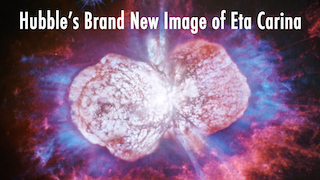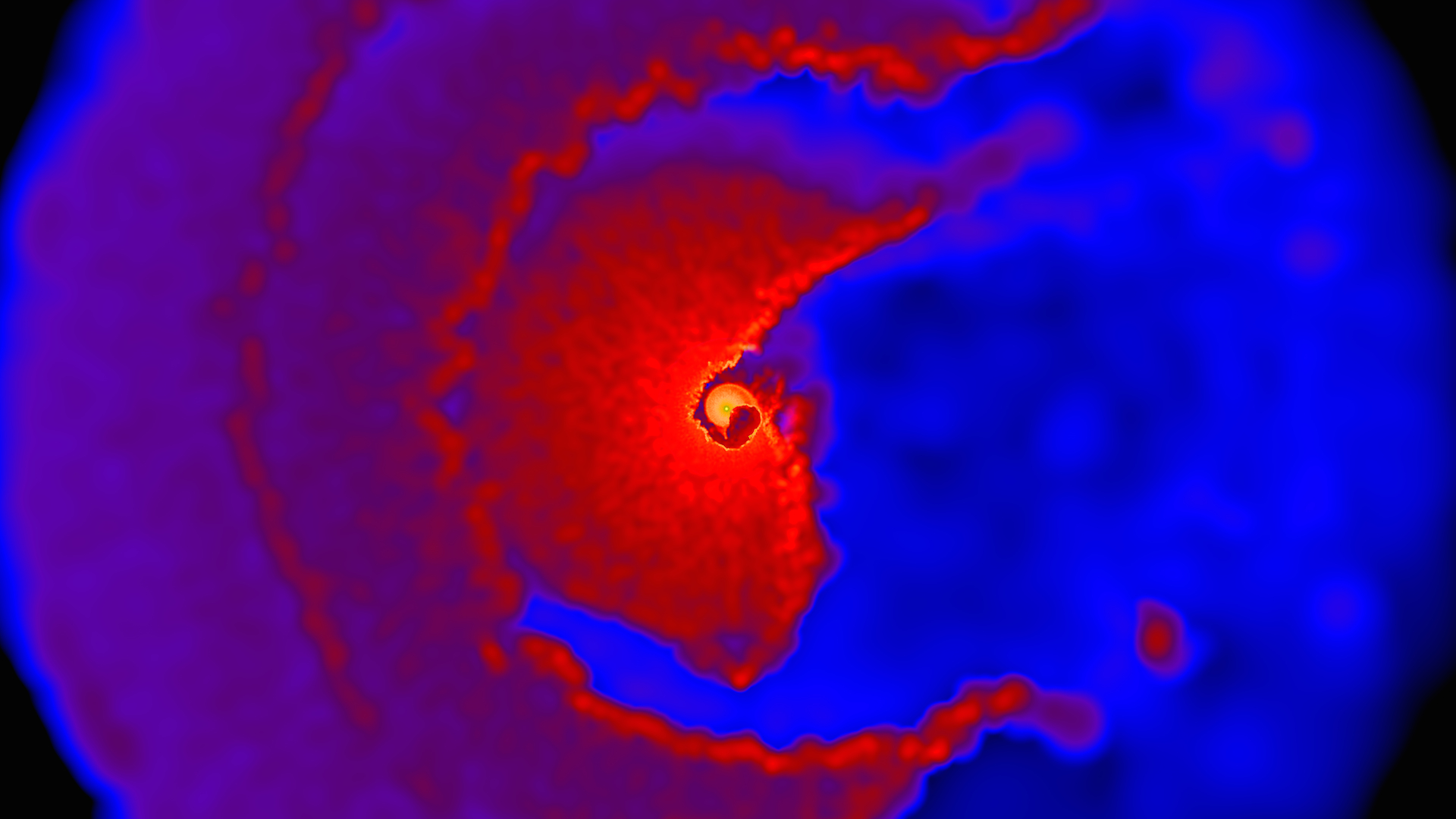Superstar Eta Carinae

NASA observatories take an unprecedented look into two stars with a violent past.
Eta Carinae, the most luminous and massive stellar system within 10,000 light-years of Earth, is known for its surprising behavior, erupting twice in the 19th century for reasons scientists still don't understand. Located about 7,500 light-years away in the southern constellation of Carina, Eta Carinae comprises two massive stars whose eccentric orbits bring them unusually close every 5.5 years. Both produce powerful gaseous outflows called stellar winds, which enshroud the stars and stymy efforts to directly measure their properties. During the past 11 years, astronomers at NASA's Goddard Space Flight Center have developed a model based on routine observations of the stars using ground-based telescopes and multiple NASA satellites. According to this model, the interaction of the two stellar winds accounts for many of the periodic changes observed in the system. Scientists will use information from the model to further explore the system's inner workings and unravel its tumultuous past. Watch the video to learn more.
Explore Eta Carinae from the inside out with the help of supercomputer simulations and data from NASA missions in this video.

Orbit diagram of Eta Carinae. At closest approach, the stars are 140 million miles apart, or about the average distance between Mars and the sun.

Supercomputer simulations reveal the complexity of the stellar wind interaction of Eta Carinae's two stars.

Eta Carinae's eruption in the 1840s created the Homunculus Nebula (above), an expanding cloud of gas and dust that's now about a light-year long.
For More Information
See NASA.gov
Credits
Please give credit for this item to:
NASA's Goddard Space Flight Center
Homunculus Nebula image courtesy of NASA/ESA/Hubble SM4 ERO Team
-
Writer
- Francis Reddy (Syneren Technologies)
-
Producer
- Scott Wiessinger (USRA)
-
Scientists
- Thomas Madura (ORAU)
- Theodore Gull (NASA/GSFC)
-
Animator
- Thomas Madura (ORAU)
-
Narrator
- Scott Wiessinger (USRA)
-
Video editor
- Scott Wiessinger (USRA)
-
Narration
- Scott Wiessinger (USRA)
- Francis Reddy (Syneren Technologies)
Release date
This page was originally published on Thursday, October 1, 2015.
This page was last updated on Wednesday, May 3, 2023 at 1:49 PM EDT.

